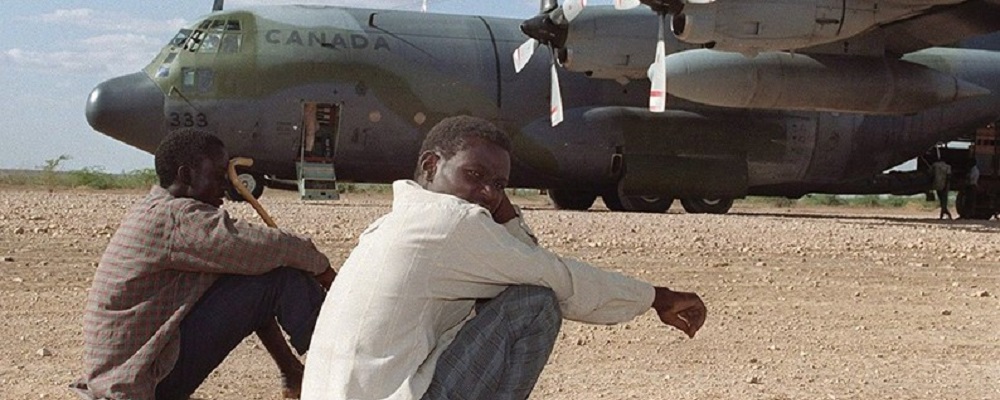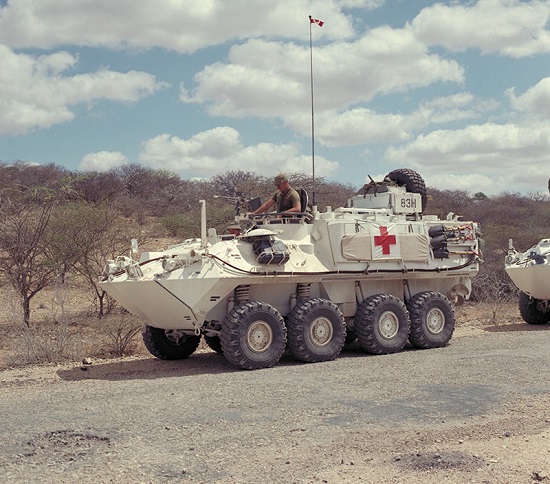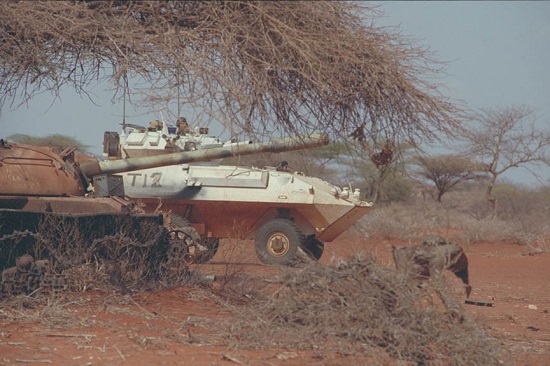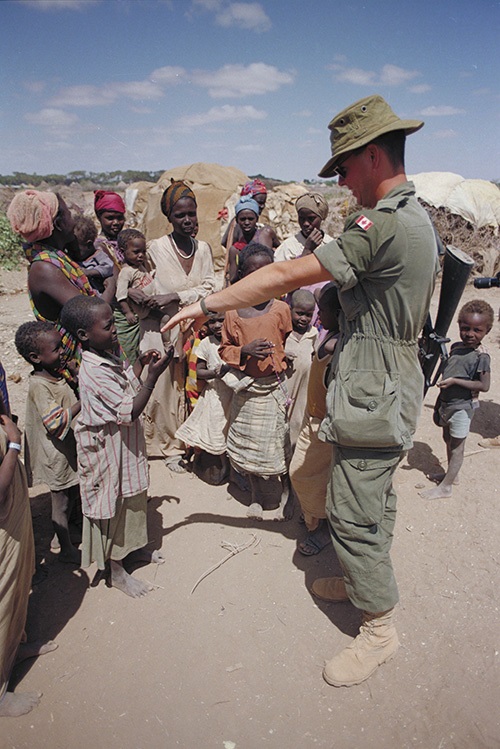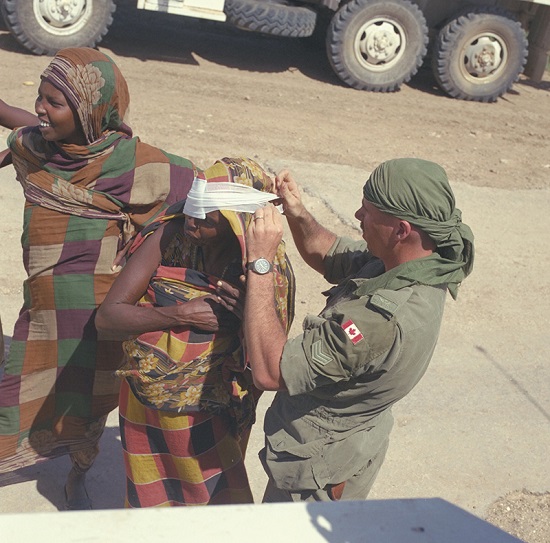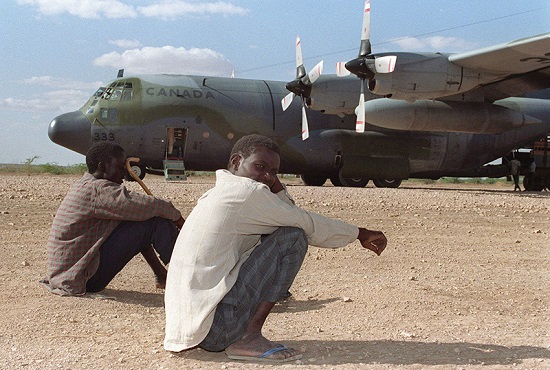A difficult mission
One of the countries which would prove to be especially challenging for peace support personnel was Somalia. Canadian Armed Forces (CAF) members served in Somalia from 1992 to 1993. They took part in United Nations (UN) peace missions and a United States-led multinational peace support operation. The controversy that would come to surround Canada’s efforts in the country has made the name Somalia a sensitive one for many.
Background
Somalia is a large country in the Horn of Africa. It is spread out along the Indian Ocean at the most eastern corner of the continent. The hot and arid country, straddling the equator, has a land mass of more than 600,000 square kilometres, making it roughly the size of Saskatchewan. Most of Somalia’s eight million people are very poor.
The areas that would come together to become Somalia were once colonies of Europe. After the Second World War, they began moving down the path toward independence, becoming one nation in 1960.
The country’s society is tribal-based, with strong clan ties having a great influence on the politics of the country. The years following independence were difficult for the people of Somalia. They lived with internal and international tensions, uprisings and drought. In the early 1990s, widespread civil war and famine engulfed the entire country. Hundreds of thousands died in the upheavals. The country became dominated by the activities of rival clans and local warlords with their brutal militias who spread terror and prevented any semblance of normal life.
